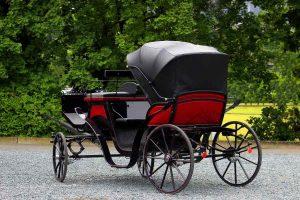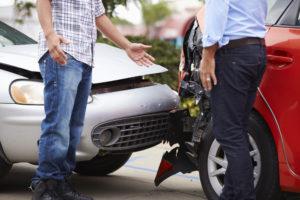
Since the birth of New Orleans in 1718, locals and tourist alike have utilized horse and buggies to travel the streets of the French Quarter. Even in 2018 the sight of mule drawn carriages is commonplace in the city. Walking past Jackson Square, it is not unusual to see five or six carriages ready and waiting to take tourist on tours of the city.
Even to locals, the allure of a romantic horse drawn carriage rental through the historic French Quarter is enticing, leading to these tours being one of the most common sights of the Vieux Carre.
While most carriage rides offer riders nothing more than amusing stories about the city and great photo opportunities, unfortunately things do go wrong sometimes, leaving people, property, and sometimes even the animals injured.
To understand how to protect yourself if you or someone you love is injured during a carriage ride in new orleans, it’s helpful to have some historical context.
In New Orleans, Horse Drawn Carriages Are Actually Mule Drawn
Although horses used to be the norm for carriage rides in New Orleans, that changed in the 1980s. More and more horses were being affected by the intense summer heat while pulling French Quarter carriage tours and people began to complain.
After the public witnessed two horses die while working pulling carriages, the city council finally took action. Initially, the council considered banning the carriages altogether until another solution was proposed: mules. Mules are not only stronger and more sure-footed than horses, but they are better suited to withstand the soaring temperatures and oppressive humidity of Southern Louisiana.
The council agreed to this compromise and for nearly the past three decades, mule drawn carriages are the only carriages permitted to collect money for tours.
Carriage operators are required to carry insurance and to obtain a permit from the City. While you might still see a horse carriage in the Quarter occasionally, the operators are not allowed to collect any money for the ride, meaning they do not have an official permit and they may not be insured. So what do you do if you’re injured by one of these rides?
For a free legal consultation, call 800-537-8185
Liability for Horse Drawn and Mule Drawn Carriage Accidents: Who Is Responsible?
As vehicles become more prevalent through the twentieth century, vehicle and carriages had to learn to share the road ways, inevitably leading to collisions between the two. Although these rides are picturesque, unfortunately they can go wrong in a number of ways. A mule can spook and run off in the chaos of the French Quarter, causing a carriage to tip over or collide with people and property.
A vehicle can strike a carriage and carriage drivers who play fast and loose with traffic laws can also strike vehicles and pedestrians. It is understandably confusing to know how the law applies when a carriage accident occurs.
While the law regarding vehicles and horse drawn carriages is rather clear, the Louisiana legislature has also taken some additional steps to protect carriage drivers in these situations.
Carriage Laws
Under Louisiana law, a vehicle is defined as “every device by which persons or things may be transported upon a public highway or bridge, except devices moved by human power or used exclusively upon stationary rails or tracks.
A bicycle or a ridden animal shall be a vehicle, and a trailer or semitrailer shall be a separate vehicle.” The law goes on to clarify that carriages are held to the same standard as motor-operated vehicles, stating that “Every person riding an animal or driving any animal-drawn vehicle upon a roadway shall be granted all of the rights and be subject to all of the duties applicable to the driver of a vehicle by this Chapter, except those provisions which by their very nature can have no application.”
Tricky Laws
Basically, these laws say that when a collision occurs between a horse drawn carriage and a vehicle the standard law of negligence applies. However, like many other states, Louisiana has also enacted a “farm animal immunity statute,” which makes the issue of liability in these accidents trickier.
Essentially, this statute says that the “sponsor” of a farm animal activity is not liable for any injury or death to a participant that is caused by the “inherent risks of a farm animal activity,” and the law limits the types of claims that can be asserted as a result of accidents involving farm animals.
Thus, if you are injured by a mule drawn carriage, not only will you have to show that the carriage driver was at fault, but also that the accident occurred was not an “inherent risk of a farm animal activity.”
While this statute might not apply if you are in an accident between a vehicle and a carriage, it is especially problematic for riders who paid for a tour hoping for a fun ride in the French Quarter and end up in a mess of injuries and liability issues.
Were You Injured?
Considering these laws, people who are injured in a collision with a carriage or while riding on a carriage should follow the same procedures as you would if you were in a typical auto accident.
As soon as the accident occurs you should notify the police and ensure that a report is created. If you cannot notify the police immediately, at the very least you should ensure that you get the contact information of anyone involved and any witnesses.
Like vehicles, mule drawn carriage operators are required to carry insurance and that will be important information you need to make your claim. If your vehicle was involved you will want to notify your insurer soon after the collision.
Like any other accident you should also take pictures if possible, speak with witnesses, and have any injuries looked at by a medical professional as soon as possible.
No matter what, if you are involved in an accident with a carriage it is important not to worry about the legal implications immediately– take care of yourself first.
However, especially when the farm animal immunity statute will apply, it is important to note that navigating the waters of a carriage accident can be particularly difficult and it may be helpful to consult with an attorney to ensure that you receive the compensation you deserve.
Have You Or Someone You Love Been Injured in a Carriage Accident?
If you or a loved one has been involved in an accident with horse drawn or mule drawn carriage, you may be eligible to file a claim for medical costs, emotional distress, and further damages.
Fill out our free case evaluation form to see if you can make a claim for injuries and damages. An experienced New Orleans attorney at Morris Bart will assist you in the evaluation process. Initial consultations are FREE and we work on a contingency-fee basis.
Click here to see more about our office locations throughout Louisiana, Mississippi, Alabama, and Arkansas.
Questions?Call 800-537-8185
to find a Morris Bart office near you.





